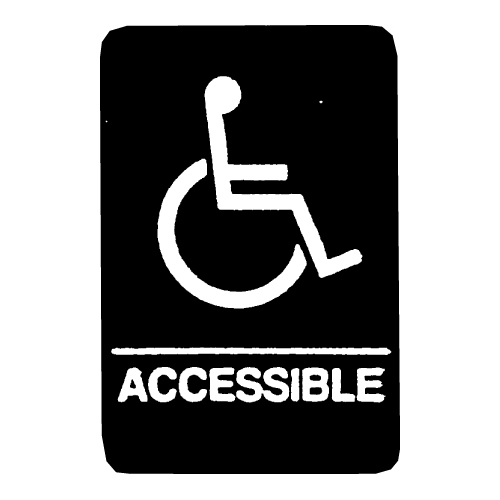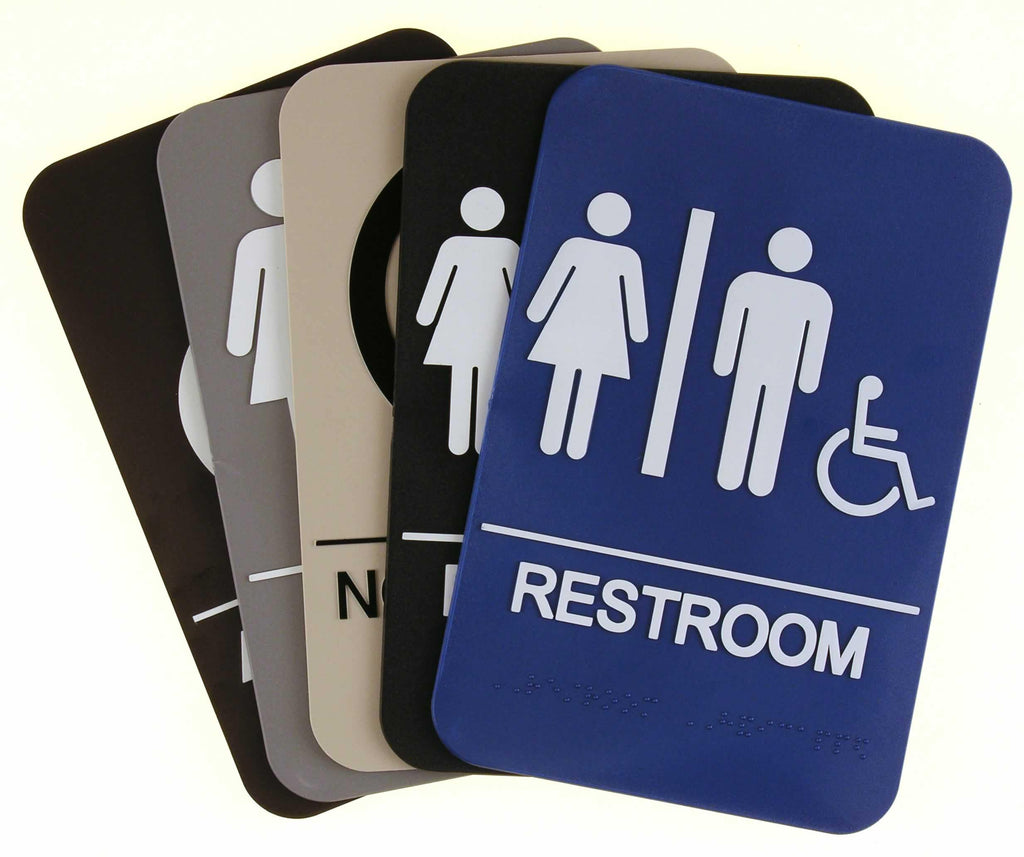Understanding the Regulations Behind ADA Signs
Understanding the Regulations Behind ADA Signs
Blog Article
Checking Out the Key Features of ADA Signs for Boosted Access
In the world of ease of access, ADA indications serve as silent yet powerful allies, guaranteeing that areas are navigable and inclusive for people with handicaps. By integrating Braille and responsive elements, these signs damage obstacles for the aesthetically impaired, while high-contrast color design and readable fonts deal with varied aesthetic demands. Furthermore, their calculated placement is not arbitrary yet instead a calculated effort to facilitate seamless navigation. Past these features exists a much deeper narrative concerning the development of inclusivity and the recurring commitment to producing fair rooms. What extra could these signs signify in our search of global availability?
Relevance of ADA Compliance
Guaranteeing compliance with the Americans with Disabilities Act (ADA) is crucial for cultivating inclusivity and equivalent accessibility in public rooms and workplaces. The ADA, passed in 1990, mandates that all public facilities, companies, and transportation services accommodate people with impairments, guaranteeing they enjoy the very same rights and possibilities as others. Compliance with ADA standards not only meets legal commitments but likewise enhances a company's track record by demonstrating its dedication to diversity and inclusivity.
One of the crucial elements of ADA compliance is the application of obtainable signage. ADA signs are created to make certain that people with specials needs can conveniently browse through structures and areas.
Additionally, adhering to ADA regulations can reduce the threat of lawful effects and possible penalties. Organizations that stop working to adhere to ADA guidelines may encounter lawsuits or penalties, which can be both harmful and monetarily troublesome to their public picture. Hence, ADA compliance is essential to fostering a fair environment for everyone.
Braille and Tactile Components
The unification of Braille and tactile components into ADA signage personifies the concepts of availability and inclusivity. It is generally positioned beneath the matching message on signage to guarantee that individuals can access the information without visual support.
Tactile components expand beyond Braille and consist of raised personalities and signs. These components are designed to be noticeable by touch, permitting individuals to identify area numbers, toilets, leaves, and various other vital locations. The ADA sets certain standards regarding the dimension, spacing, and positioning of these responsive aspects to optimize readability and ensure uniformity across various settings.

High-Contrast Color Design
High-contrast color plans play a crucial duty in enhancing the presence and readability of ADA signage for individuals with visual disabilities. These systems are crucial as they take full advantage of the difference in light reflectance between message and background, making certain that signs are conveniently discernible, even from a distance. The Americans with Disabilities Act (ADA) mandates making use of particular color contrasts to accommodate those with minimal vision, making it a vital facet of compliance.
The effectiveness of high-contrast colors hinges on their ability to stick out in different lights problems, including poorly lit environments and locations with glare. Typically, dark message on a light background or light message on a dark history is employed to attain ideal comparison. Black text on a yellow or white history gives a raw visual difference that aids in fast acknowledgment and comprehension.

Legible Fonts and Text Size
When thinking about the layout of ADA signage, the option of understandable font styles and suitable text size can not be overstated. The Americans with Disabilities Act (ADA) mandates that typefaces need to be not italic and sans-serif, oblique, manuscript, extremely ornamental, or of unusual kind.
The size of the message also plays a crucial role in ease of access. According to ADA guidelines, the minimum message elevation need to be 5/8 inch, and it should increase proportionally with seeing range. This is specifically crucial in public spaces where signage requirements to be reviewed quickly and accurately. Consistency in text dimension adds to a natural visual experience, assisting individuals in browsing environments successfully.
Moreover, spacing in between lines and letters is important to readability. Appropriate spacing protects against characters from showing up crowded, boosting readability. By adhering to these standards, designers can considerably enhance ease of access, making certain that signs serves its designated function for all individuals, no matter their visual capabilities.
Effective Placement Techniques
Strategic positioning of ADA signage is necessary for making best use of accessibility and making this sure compliance with legal criteria. Correctly located indicators direct people with specials needs properly, helping with navigation in public spaces. Key considerations consist of elevation, next exposure, and proximity. ADA standards specify that indications must be mounted at an elevation between 48 to 60 inches from the ground to guarantee they are within the line of view for both standing and seated individuals. This common height range is essential for inclusivity, making it possible for wheelchair users and individuals of varying elevations to accessibility details effortlessly.
Additionally, indicators must be positioned nearby to the lock side of doors to allow simple recognition before entry. Consistency in indicator positioning throughout a facility improves predictability, lowering confusion and boosting overall individual experience.

Conclusion
ADA indicators play a crucial role in advertising ease of access by integrating functions that address the demands of people with handicaps. Incorporating Braille and tactile components makes sure crucial info comes to the aesthetically damaged, while high-contrast color design and understandable sans-serif typefaces enhance visibility across numerous illumination problems. Efficient positioning approaches, such as appropriate placing heights and calculated locations, further help with navigating. These elements collectively promote a comprehensive environment, emphasizing the significance of ADA compliance in ensuring equivalent accessibility for all.
In the navigate to these guys realm of availability, ADA indicators offer as quiet yet powerful allies, making certain that rooms are inclusive and accessible for people with specials needs. The ADA, enacted in 1990, mandates that all public facilities, employers, and transportation services accommodate individuals with specials needs, ensuring they appreciate the very same civil liberties and possibilities as others. ADA Signs. ADA indicators are made to ensure that people with impairments can quickly browse with areas and structures. ADA guidelines stipulate that indications must be installed at an elevation in between 48 to 60 inches from the ground to ensure they are within the line of sight for both standing and seated individuals.ADA indications play an important duty in promoting access by integrating features that attend to the needs of people with impairments
Report this page